Region plays high-stakes AI game
11 June 2024
This package also includes: Data centres meet upbeat growth
Artificial intelligence (AI) is a potential enabler for the economic diversification programmes of the GCC’s hydrocarbons-exporting states.
The UAE launched an open-source large-language model (LLM) last year. Falcon 40B, shortly followed by Falcon 180B, cemented the reputation of the Abu Dhabi government-funded Technology Innovation Institute as a major player in generative AI.
With 180 billion parameters and trained on 3.5 trillion tokens, Falcon 180B soared to the top of the Hugging Face Leaderboard, a benchmark for pre-trained LLMs. Falcon 180B outperformed competitors such as Meta’s Llama 2 in areas including reasoning, coding, proficiency and knowledge tests.
The launch of Falcon followed cumulative investments in research, talent acquisition and digital infrastructure. In recent years, Abu Dhabi has formed government-attached agencies and commercial entities backed by its sovereign wealth funds to focus on AI.
One such company is G42, which has partnered with the US’ OpenAI to develop sector-focused generative AI models, and with Microsoft to run applications on Azure and undertake AI skilling initiatives in the UAE and beyond.
Global AI hubs
The UAE aims to become a world-leading AI hub alongside the US and China, but the country will have to tread carefully when choosing partners to avoid geopolitical complications involving its most important security ally and its largest energy client.
Riyadh seems determined to give Abu Dhabi a run for its AI money. The GCC region’s two largest states have placed
separate multimillion-dollar orders for graphics processing units – powerful chips designed for training AI – from top US supplier Nvidia.
They have also formed AI-focused investment vehicles with a view to maximising investments and returns from AI ventures at home and abroad. Abu Dhabi formed MGX, which aims to build $100bn in assets under management within a few years, while Saudi Arabia’s Public Investment Fund formed a $100bn platform to transform the kingdom into a semiconductor and electronics hub, with AI playing a central role in the plan.
In May this year, the Saudi Data & Artificial Intelligence Authority and New York-based technology company IBM launched an open-source Arabic LLM called Allam on IBM’s Watsonx AI and data platform.
With AI promising to be a $1tn market by 2030, it offers attractive opportunities
Computer power
A potential issue facing the determined push for AI leadership is that AI requires enormous computational power and energy, in addition to vast capital and talent.
A recent article published by the World Economic Forum (WEF) suggests that the computational power required to sustain the rise of AI doubles approximately every 100 days.
Related read: Global AI market to top $1tn in 2030
“The energy required to run AI tasks is already accelerating with an annual growth rate between 26% and 36%. This means by 2028, AI could be using more power than the entire country of Iceland used in 2021,” the WEF article says.
The AI lifecycle impacts the environment in two stages. First is the training phase, when the models learn and develop by digesting vast amounts of data; and second is the inference phase, when they solve real-world problems.
At present, the environmental footprint is split, with training responsible for about 20% and inference taking up 80%.
“As AI models gain traction across diverse sectors, the need for inference and its environmental footprint will escalate,” the WEF warns.
A peer-reviewed analysis in the science journal Joule says that a continuation of the current trends in AI capacity and adoption will likely result in Nvidia shipping 1.5 million AI server units a year by 2027.
When running at full capacity, these servers are expected to consume at least 85.4 terawatt-hours of electricity annually, which is equivalent to 100GW of installed capacity in the next three years.
Data centres, which make up the main AI digital infrastructure, already account for about 1%-1.5% of global electricity use.
In a hypothetical scenario in which everyone shifts to AI for mundane tasks such as performing searches on Google, every data centre would effectively experience a 10-fold increase in energy consumption, according to Alex De Vries, a data scientist at the Central Bank of the Netherlands, which conducted the analysis published by Joule.
As a result, the hydrocarbons-exporting and energy-transitioning GCC states – particularly the UAE and Saudi Arabia – appear to be a natural fit for AI, due to the presence of abundant and cheap fossil-fuel or renewable-energy resources, and the need to diversify their revenue sources away from oil. With AI promising to be a $1tn market by 2030, it offers attractive opportunities.
According to a Dubai-based senior executive with a global infrastructure investor, each country and company will eventually need to consider what part they can play in the AI value chain.
Since Nvidia seems to have captured the microprocessor space, the other areas of opportunity are in developing computing power, algorithms and implementation. “Both Saudi Arabia and the UAE have the theoretical capability to grow into the computing power and implementation spaces, which require computing capacity through data centres and medium-skilled manpower to deploy, migrate, train and maintain [AI],” the executive says.
Greening AI
Policy adjustments could be needed to support such advances, especially when it comes to minimising AI’s carbon footprint, even as it enables the curbing of those in other sectors – including the power sector.
In addition to the vast computing and wattage requirements of AI, the region’s arid weather and very hot summer temperatures mean that regional data centres have greater cooling requirements.
To address this, the Dubai state utility has started to build a solar-powered data centre, which is understood to be the first of its kind in the world.
Saudi Arabia, which aims to have 58.7GW of renewable energy installed capacity by 2030 – accounting for about 50% of its electricity production mix – could follow a similar model.
Abu Dhabi’s quantum computer project, in partnership with researchers at Spain’s Qilimanjaro Quantum Tech, is under way.
Unlike a classic supercomputer that operates on binary states, a quantum computer uses quantum mechanics phenomena including superposition and entanglement to generate and manipulate subatomic particles such as electrons or photons, or qubits.
This allows greater processing powers that can enable the performance of complex calculations that would take much longer to be solved, consuming less power than a supercomputer.
The growing electricity surplus in Abu Dhabi, as all four reactors at the Barakah nuclear power plant come onstream this year, could also be allocated to data centres and AI applications.
In addition, Abu Dhabi’s plan to start procuring phase two of its Barakah nuclear energy plant may not only boost energy exports, but could also create sufficient margins to accommodate future AI computing demand.
Related read: Nuclear power will help region achieve AI ambitions
“I don’t know if that means only nuclear power can solve the demand, but it certainly is a good option and carries some strategic advantage as well,” says Karen Young, senior research scholar at Columbia University’s Centre on Global Energy Policy.
While AI needs a significant amount of electricity for computations, there should be savings through productivity increases
Efficiency gains
While it is difficult to accurately quantify and forecast AI’s overall carbon emissions, a holistic view of its overall environmental impact is required.
In theory, while AI itself needs a significant amount of electricity for computations, there should be savings through productivity increases. “Will people need to go to the office less often, and how about the improved performance of machines?” asks the Dubai-based infrastructure investor.
However, it is also important not to overstate AI’s potential benefits to the region’s economies. While AI could be a major driver of economic diversification, Young has yet to be convinced that it will significantly boost the GCC’s GDP growth.
Job creation is a vital element of economic diversification, she tells MEED, but AI is often used to replace roles in the service sector and lower-skilled opportunities, such as those in the retail banking sector. This could impact efforts under way in several GCC states to boost employment among citizens, such as the Saudi Nationalisation Programme and the UAE’s Emiratisation drive.
On the upside, however, AI can be very good at improving efficiencies in the oil and gas industry and the power sector, and at boosting productivity.
The need of the hour appears to be establishing a clear path towards efficient AI deployment, despite the fact that the results of the technology’s full-fledged implementation remain hard to ascertain.
“The UAE is doing a lot to attract skilled people to provide more value-added services, but that is an organic process and needs a more vibrant ecosystem of education institutions – and companies establishing more than just sales offices – to be truly called a hub,” the infrastructure investor tells MEED. “Saudi Arabia is still a bit far from that.”
Exclusive from Meed
-
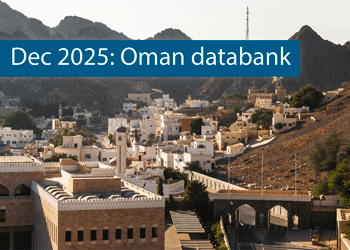 Oman’s growth forecast points upwards
Oman’s growth forecast points upwards24 December 2025
-
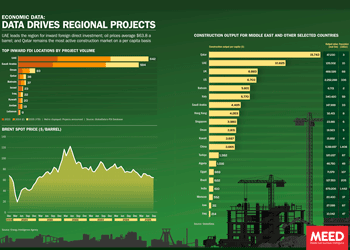 December 2025: Data drives regional projects
December 2025: Data drives regional projects23 December 2025
-
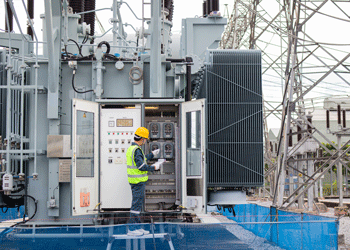 Local firm bids lowest for Kuwait substation deal
Local firm bids lowest for Kuwait substation deal22 December 2025
-
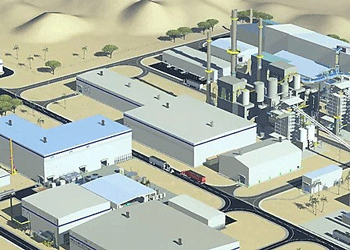 Saudi-Dutch JV awards ‘supercentre’ metals reclamation project
Saudi-Dutch JV awards ‘supercentre’ metals reclamation project22 December 2025
-
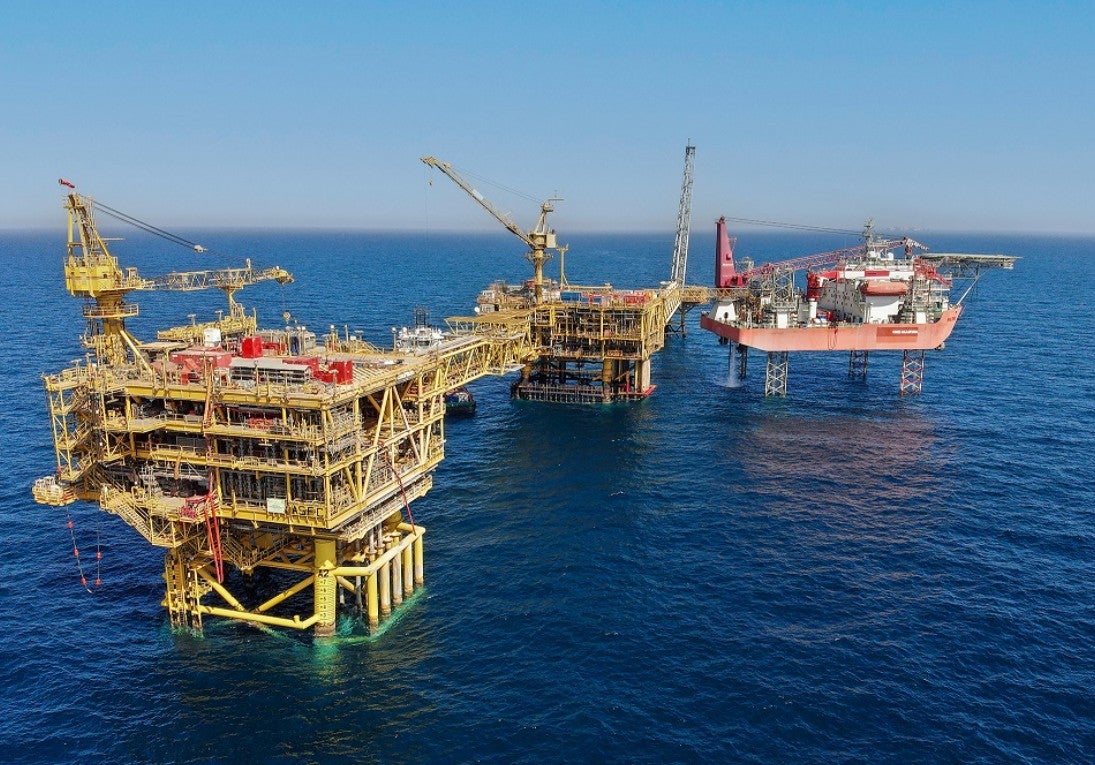 QatarEnergy LNG awards $4bn gas project package
QatarEnergy LNG awards $4bn gas project package22 December 2025
All of this is only 1% of what MEED.com has to offer
Subscribe now and unlock all the 153,671 articles on MEED.com
- All the latest news, data, and market intelligence across MENA at your fingerprints
- First-hand updates and inside information on projects, clients and competitors that matter to you
- 20 years' archive of information, data, and news for you to access at your convenience
- Strategize to succeed and minimise risks with timely analysis of current and future market trends

Related Articles
-
 Oman’s growth forecast points upwards
Oman’s growth forecast points upwards24 December 2025

MEED’s January 2026 report on Oman includes:
> COMMENT: Oman steadies growth with strategic restraint
> GVT & ECONOMY: Oman pursues diversification amid regional concerns
> BANKING: Oman banks feel impact of stronger economy
> OIL & GAS: LNG goals galvanise Oman’s oil and gas sector
> POWER & WATER: Oman prepares for a wave of IPP awards
> CONSTRUCTION: Momentum builds in construction sectorTo see previous issues of MEED Business Review, please click herehttps://image.digitalinsightresearch.in/uploads/NewsArticle/15306449/main.gif -
 December 2025: Data drives regional projects
December 2025: Data drives regional projects23 December 2025
Click here to download the PDF
Includes: Top inward FDI locations by project volume | Brent spot price | Construction output
MEED’s January 2026 report on Oman includes:
> COMMENT: Oman steadies growth with strategic restraint
> ECONOMY: Oman pursues diversification amid regional concerns
> BANKING: Oman banks feel impact of stronger economy
> OIL & GAS: LNG goals galvanise Oman’s oil and gas sector
> POWER & WATER: Oman prepares for a wave of IPP awards
> CONSTRUCTION: Momentum builds in construction sectorTo see previous issues of MEED Business Review, please click herehttps://image.digitalinsightresearch.in/uploads/NewsArticle/15306140/main.gif -
 Local firm bids lowest for Kuwait substation deal
Local firm bids lowest for Kuwait substation deal22 December 2025
The local Al-Ahleia Switchgear Company has submitted the lowest price of KD33.9m ($110.3m) for a contract to build a 400/132/11 kV substation at the South Surra township for Kuwait’s Public Authority for Housing Welfare (PAHW).
The bid was marginally lower than the two other offers of KD35.1m and KD35.5m submitted respectively by Saudi Arabia’s National Contracting Company (NCC) and India’s Larsen & Toubro.
PAHW is expected to take about three months to evaluate the prices before selecting the successful contractor.
The project is one of several transmission and distribution projects either out to bid or recently awarded by Kuwait’s main affordable housing client.
This year alone, it has awarded two contracts worth more than $100m for cable works at its 1Z, 2Z, 3Z and 4Z 400kV substations at Al-Istiqlal City, and two deals totalling just under $280m for the construction of seven 132/11kV substations in the same township.
Most recently, it has tendered two contracts to build seven 132/11kV main substations at its affordable housing project, west of Kuwait City. The bid deadline for the two deals covering the MS-01 through to MS-08 substations is 8 January.
https://image.digitalinsightresearch.in/uploads/NewsArticle/15305745/main.gif -
 Saudi-Dutch JV awards ‘supercentre’ metals reclamation project
Saudi-Dutch JV awards ‘supercentre’ metals reclamation project22 December 2025
The local Advanced Circular Materials Company (ACMC), a joint venture of the Netherlands-based Shell & AMG Recycling BV (SARBV) and local firm United Company for Industry (UCI), has awarded the engineering, procurement and construction (EPC) contract for the first phase of its $500m-plus metals reclamation complex in Jubail.
The contract, estimated to be worth in excess of $200m, was won by China TianChen Engineering Corporation (TCC), a subsidiary of China National Chemical Engineering Company (CNCEC), following the issue of the tender in July 2024.
Under the terms of the deal, TCC will process gasification ash generated at Saudi Aramco’s Jizan refining complex on the Red Sea coast to produce battery-grade vanadium oxide and vanadium electrolyte for vanadium redox flow batteries. AMG will provide the licensed technology required for the production process.
The works are the first of four planned phases at the catalyst and gasification ash recycling ‘Supercentre’, which is located at the PlasChem Park in Jubail Industrial City 2 alongside the Sadara integrated refining and petrochemical complex.
Phase 2 will expand the facility to process spent catalysts from heavy oil upgrading facilities to produce ferrovanadium for the steel industry and/or additional battery-grade vanadium oxide.
Phase 3 involves installing a manufacturing facility for residue-upgrading catalysts.
In the fourth phase, a vanadium electrolyte production plant will be developed.
The developers expect a total reduction of 3.6 million metric tonnes of carbon dioxide emissions a year when the four phases of the project are commissioned.
SARBV first announced its intention to build a metal reclamation and catalyst manufacturing facility in Saudi Arabia in November 2019. The kingdom’s Ministry of Investment, then known as the Saudi Arabian General Investment Authority (Sagia), supported the project.
In July 2022, SARBV and UCI signed the agreement to formalise their joint venture and build the proposed facility.
The project has received support from Saudi Aramco’s Namaat industrial investment programme. Aramco, at the time, also signed an agreement with the joint venture to offtake vanadium-bearing gasification ash from its Jizan refining complex.
Photo credit: SARBV
https://image.digitalinsightresearch.in/uploads/NewsArticle/15305326/main.gif -
 QatarEnergy LNG awards $4bn gas project package
QatarEnergy LNG awards $4bn gas project package22 December 2025
QatarEnergy LNG, a subsidiary of state-owned QatarEnergy, has awarded the main engineering, procurement, construction and installation (EPCI) contract for a major package for the second phase of its North Field Production Sustainability (NFPS) project.A consortium comprising the Italian contractor Saipem and state-owned China Offshore Oil Engineering Company (COOEC) has secured the EPCI contract for the COMP5 package. The contract value is $4bn, with Saipem declaring its share to be worth $3.1bn.
Milan-headquartered Saipem said the contract will run for about five years. The scope of work comprises engineering, procurement, fabrication and installation of two compression complexes, each including a compression platform, a living quarters platform, a flare platform supporting the gas combustion system, and the related interconnecting bridges. Each complex will have a total weight of about 68,000 tonnes.
Offshore installation operations will be carried out by Saipem’s De He construction vessel in 2029 and 2030.
MEED previously reported that the following contractors submitted bids for the NFPS phase two COMP5 package:
- Larsen & Toubro Energy Hydrocarbon (India)
- McDermott (US)
- Saipem/China Offshore Oil Engineering Company (Italy/China)
QatarEnergy LNG, formerly Qatargas, is said to have issued the tender for the NFPS phase two COMP5 package in the first quarter of the year.
Contractors submitted technical bids for the COMP5 package in late June, while commercial bids were submitted by 8 October, as per sources.
Based upon initial evaluation of bids by QatarEnergy LNG, L&TEH has emerged as the lowest bidder for the COMP5 package, followed by McDermott, with the consortium of Saipem and COOEC in third place, MEED reported in late October.
In the weeks following that, the project operator is said to have engaged all bidders for a final round of negotiations, during which the consortium of Saipem and COOEC is believed to have “clinched the deal”, according to sources.
The detailed scope of work on the COMP5 package covers the EPCI work on the following:
- Two gas compression platforms, each weighing 30,000-35,000 tonnes, plus jacket
- Two living quarters platforms, plus jacket
- Two gas flare platforms, plus jacket
- Brownfield modification work at two complexes
NFPS scheme
QatarEnergy’s North Field liquefied natural gas (LNG) expansion programme requires the state enterprise to pump large volumes of gas from the North Field offshore reserve to feed the three phases of the estimated $40bn-plus programme.
QatarEnergy has already invested billions of dollars in engineering, procurement and construction works on the two phases of the NFPS project, which aims to maintain steady gas feedstock for the North Field LNG expansion phases.
The second NFPS phase will mainly involve building gas compression facilities to sustain and gradually increase gas production from Qatar’s offshore North Field gas reserve over the long term.
Saipem has been the most successful contractor on the second NFPS phase, securing work worth a total of $8.5bn.
QatarEnergy LNG awarded Saipem a $4.5bn order in October 2022 to build and install gas compression facilities. The main scope of work on the package, which is known as EPCI 2, covers two large gas compression complexes that will comprise decks, jackets, topsides, interconnecting bridges, flare platforms, living quarters and interface modules.
The gas compression complexes – CP65 and CP75 – will weigh 62,000 tonnes and 63,000 tonnes, respectively, and will be the largest fixed steel jacket compression platforms ever built.
Following that, Saipem won combined packages COMP3A and COMP3B of the NFPS project’s second phase in September last year.
The scope of work on the combined packages encompasses the EPCI of a total of six platforms, approximately 100 kilometres (km) of corrosion resistance alloy rigid subsea pipelines of 28-inches and 24-inches diameter, 100km of subsea composite cables, 150km of fibre optic cables and several other subsea units.
Separately, QatarEnergy LNG awarded McDermott the contract for the NFPS second phase package known as EPCI 1, or COMP1, in July 2023. The scope of work on the estimated $1bn-plus contract is to install a subsea gas pipeline network at the North Field gas development.
In March this year, India’s Larsen & Toubro Energy Hydrocarbon (LTEH) won the main contract for the combined 4A and 4B package, which is the fourth package of the second phase of the NFPS project and is estimated to be valued at $4bn-$5bn.
The main scope of work on the package is the EPCI of two large gas compression systems that will be known as CP8S and CP4N, each weighing 25,000-35,000 tonnes. The contract scope also includes compression platforms, flare gas platforms and other associated structures.
LTHE sub-contracted detailed engineering and design works on the combined 4A and 4B package to French contractor Technip Energies.
NFPS first phase
Saipem is also executing the EPCI works on the entire first phase of the NFPS project, which consists of two main packages.
Through the first phase of the NFPS scheme, QatarEnergy LNG aims to increase the early gas field production capacity of the North Field offshore development to 110 million tonnes a year.
QatarEnergy LNG awarded Saipem the contract for the EPCI package in February 2021. The package is the larger of the two NFPS phase one packages and has a value of $1.7bn.
Saipem’s scope of work on the EPCI package encompasses building several offshore facilities for extracting and transporting natural gas, including platforms, supporting and connecting structures, subsea cables and anti-corrosion internally clad pipelines.
The scope of work also includes decommissioning a pipeline and other significant modifications to existing offshore facilities.
In addition, in April 2021, QatarEnergy LNG awarded Saipem two options for additional work within the EPCI package, worth about $350m.
QatarEnergy LNG awarded Saipem the second package of the NFPS phase one project, estimated to be worth $1bn, in March 2021.
Saipem’s scope of work on the package, which is known as EPCL, mainly covers installing three offshore export trunklines running almost 300km from their respective offshore platforms to the QatarEnergy LNG north and south plants located in Ras Laffan Industrial City.
Saipem performed the front-end engineering and design work on the main production package of the first phase of the NFPS as part of a $20m contract that it was awarded in January 2019. This provided a competitive advantage to the Italian contractor in its bid to win the package.
https://image.digitalinsightresearch.in/uploads/NewsArticle/15305330/main2239.jpg

 Data centres meet upbeat growth
Data centres meet upbeat growth